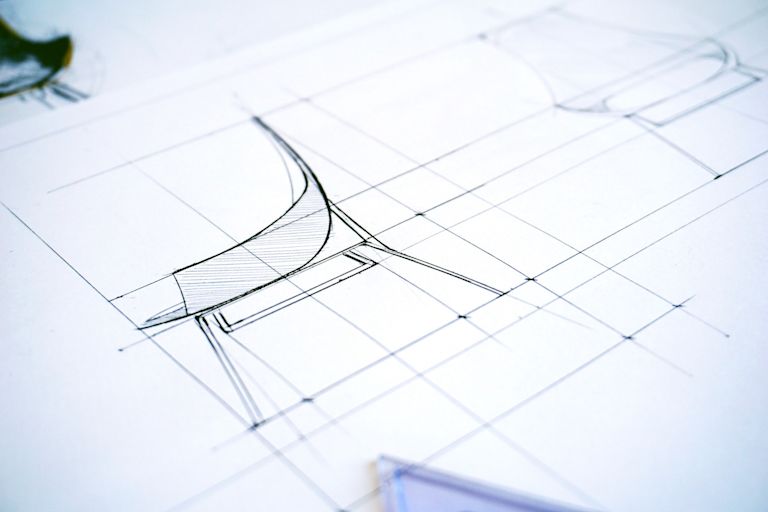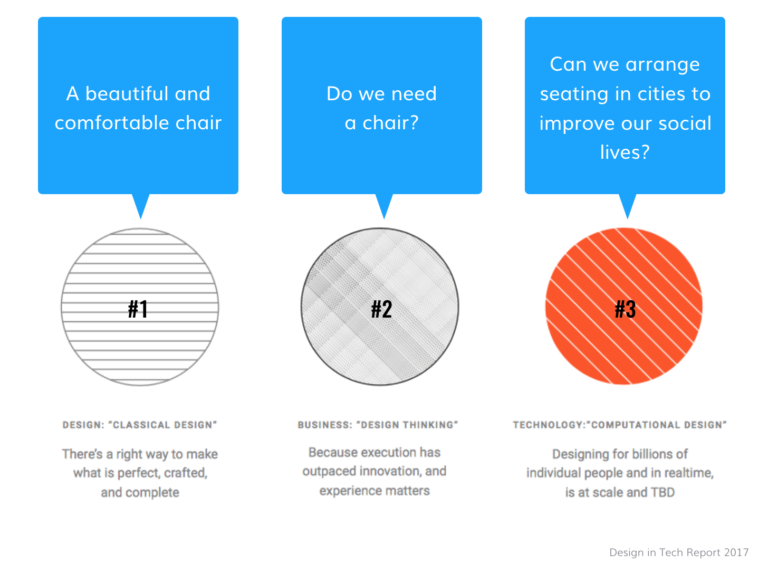Anna Harrison continues her WCEU series on the blog, sharing key learnings and themes from WordCamp Europe 2017. In this post, she reflects on a presentation by John Maeda on “ The Three Kinds of Design”.
John Maeda, design rockstar and also the new Head of Computational Design and Inclusion at Automattic, gave the audience an inspiring and philosophical account of why design is the elixir of our times. To get the benefit of the elixir, however, you need to first befriend the right kind of design. Of which there are three.
The first kind of design
The first kind of design is the kind of design that most of us think of. It is the beautiful, the stylish, the colorful. The kind of design that, if you take the time to notice it, makes you stop for a moment longer and stroke the back of the armchair, just to feel its smoothness and texture.
The first type of design, while personally satisfying, is generally limited to being accessible to only a small portion of the global population. Yes, we all dream of owning an original Le Corbusier chaise in black and white cowhide, but only those of us who fall into the world’s top 10% are in the runnings to ever own one.
The real value of Design training transcends the ability to incrementally refine the shape of staplers, juicers and the myriad of objects owned by the world’s top “10%”. The real value of design lies in its potential contribution to solving complex problems.”
From a post I wrote back in 2014
The second kind of design
The second kind of design is a little more impish than the first. You need a lot of courage to become friendly with design number two, as this one is quite unpredictable. The second kind of design lives in the spaces between comfort zones. Number two will take you on adventures through shifting sands to all kinds of new lands. Your price of entry is the will to ask “Why?”.
The spoils of design number two are not universal, but further reaching than of design number one. In asking why, there is ever a chance that the answer will produce something better, cheaper, faster. Thus, will result in things that can be consumed by a larger portion of the population. Design number two is like a Le Corbusier knock-off, made of durable molded plastic, with cup holders, WiFi and evenly distributed wireless charging stations which you can rent by the hour while in transit in Dubai.
Excellente conférence de @johnmaeda sur le #design #WCEU pic.twitter.com/foigWYYnyR
— Thierry Pigot Ⓦ (@thierrypigot) June 16, 2017
The third kind of design
The third kind of design is a bit of a bore at times. This one sits around, listening, thinking, pondering and observing things a lot. Design number three is often in the shadows of the more glamorous design one and two.
If you want to make friends with design number three, you will need to step into the vast space where thoughts live. Is unlikely that you will run into design three in the more shiny places where one and two hang out. Unless you are very lucky, every now and then the fragments that get rolled around in the vastness of design three’s thoughts snap into place. In this moment, design three steps into the limelight and brings forth something so shiny, it changes all our lives forever.
Having discovered an inexhaustible supply of energy and tacos, design number three will fly you to the moon in that Le Corbusier chair from Dubai airport. It’s only a matter of time.
OK, but I design product, what does this mean for me?
The secret of the elixir, which I learned in John Maeda’s presentation, is that design number three is not a single entity. Design number three is all of us. In order for thoughts to snap together into entirely new and universally useful forms, there is a need to understand, at a deep, emotional level, a need to be empathetic globally. There is a need for the designer to walk in the other’s shoes and sit in the other’s chair. All of the shoes and chairs.
Around 2008, the world went mobile and pretty soon we had over 5 Billion people on this planet tapping and swiping away at mobile phones for a large part of their day. From a product design perspective, this shift signaled a huge change in the demographics of product users: where in the 1990’s technology was being made and consumed by technologists, 27 years later, technology is still made by technologists but now consumed by everyone.
Products that can meet the needs of users outside of the technologist category need to be “designed”. Meaningful, profitable, systems-level design comes from becoming friendly with design number three. On a practical level, this happens when you put all different types of people in a room, as no one person knows what it’s like to walk in all the other’s shoes.
Inclusive design is good business. The secret is to make friends with the right kind of design.

